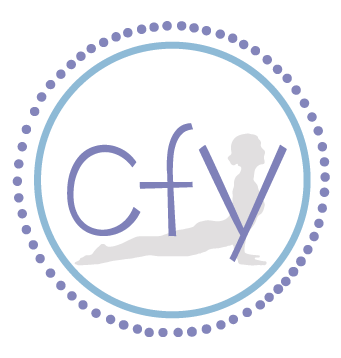Anatomy of the Shoulder
Many of you probably know I have a great love for anatomy. I had actually never studied anatomy until my yoga teacher training, but I was immediately hooked. In particular, I love thinking about what parts of the body move during a yoga practice, which is why I am always thinking of new movements and new sequences to address different parts of the body. I am continuously learning to improve my teaching and to help you feel better in your own body!
That having been said, I thought some of you might be interested in learning more about different joints, how they move, what muscles stabilize the joint, and ways you can get stronger and improve your practice. So, each month, I will send an email that focuses on a certain part of the body. And since the shoulder joint is incredibly fascinating to me, I thought I would start with that.
I would love your feedback to see if this is something that you find interesting. And I'd also love to hear if you have specific questions that I can address moving forward. I am certainly not a doctor, but I believe the more you know about your body, the better you can take care of it!
Shoulder Stabilization
The shoulder joint is very complex and is actually comprised of the connection of three bones:
- Humerus (upper arm bone)
- Scapula (shoulder blade)
- Clavicle (collar bone)
The two main joints that will be addressed here are the:
- Gleno-humeral, where the arm bone fits into the socket of shoulder blade (ball and socket joint)
- Acromioclavicular, where the shoulder blade attaches to collar bone (gliding joint)
The shoulder joint is very mobile. Just think about all the directions your arm can move, forward, up, back, and to the side. With this mobility brings greater possibility of injury, especially for people who engage in physical activity. The most common shoulder injuries are related to soft tissue surrounding the joint and can include strains, tears, inflammation, and impingement.
Luckily, the body is amazing and there are muscle groups designed to keep the shoulder stable. First, the rotator cuff consists of four muscles around the joint. If working properly and equally, the shoulder is stable; however, if one muscle is weaker than the others, the others will compensate and can potentially create an imbalance (and possibly even injury), especially in cases of repetitive stress where an action is repeated over and over (think poorly aligned postures in a vinyasa in a yoga flow class). In addition to the rotator cuff muscles, other muscles exist to provide stabilization to the shoulder blade. These muscles are the serratus anterior and rhomboids. Having balance between these sets of muscles is also important for stabilization.
So, how do you create stability in the shoulder joint? Try this:
Stand in an upright position and place your arms in front of you (as if you were doing plank):
- Hug the arm bones back and down into the socket (feel the inside and outside of the armpit)
- Press arms and hands forward (feel serratus anterior on the sides of the rib cage)
- Hug your upper arms toward each other (feel front of shoulder)
- Broaden your collarbones (feel back of shoulders)
The tricky part is to maintain the engagement of each of the four steps above at the same time. Once you feel comfortable with these actions standing, try them in table top, again trying to maintain all actions at the same time. Once you feel comfortable with maintaining that muscle engagement, continue to practice in table top by backing off about 50%. The goal is to engage the muscles without overdoing it. Then, the smaller stabilizing muscles can engage and not be overpowered by the bigger muscles.
Finally, all of these steps can be practiced in more challenging positions, such as downward facing dog, plank, side plank, dolphin, and forearm plank. Creating the appropriate actions in these poses can help strengthen the muscles and stabilize the joint. And the more you practice it, the easier it becomes!
